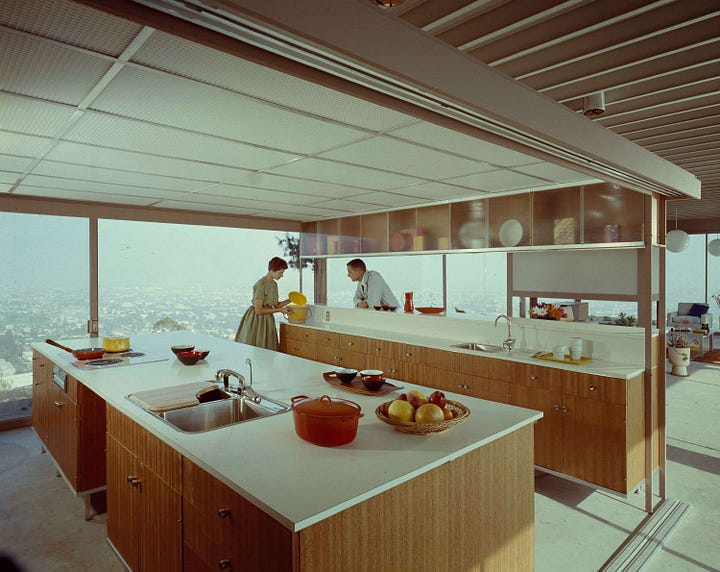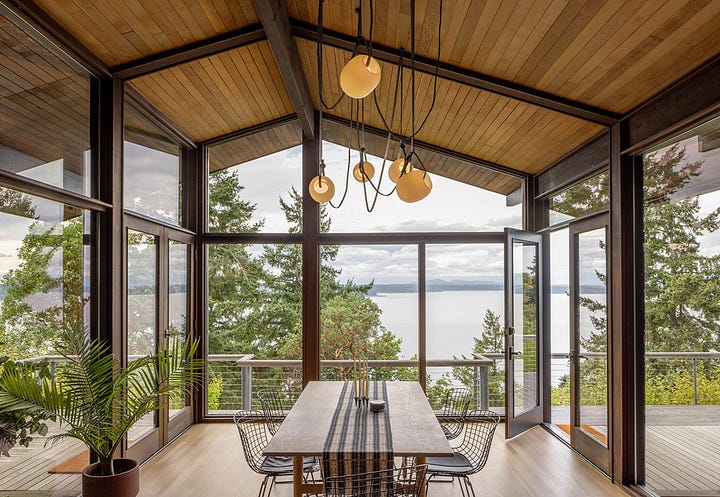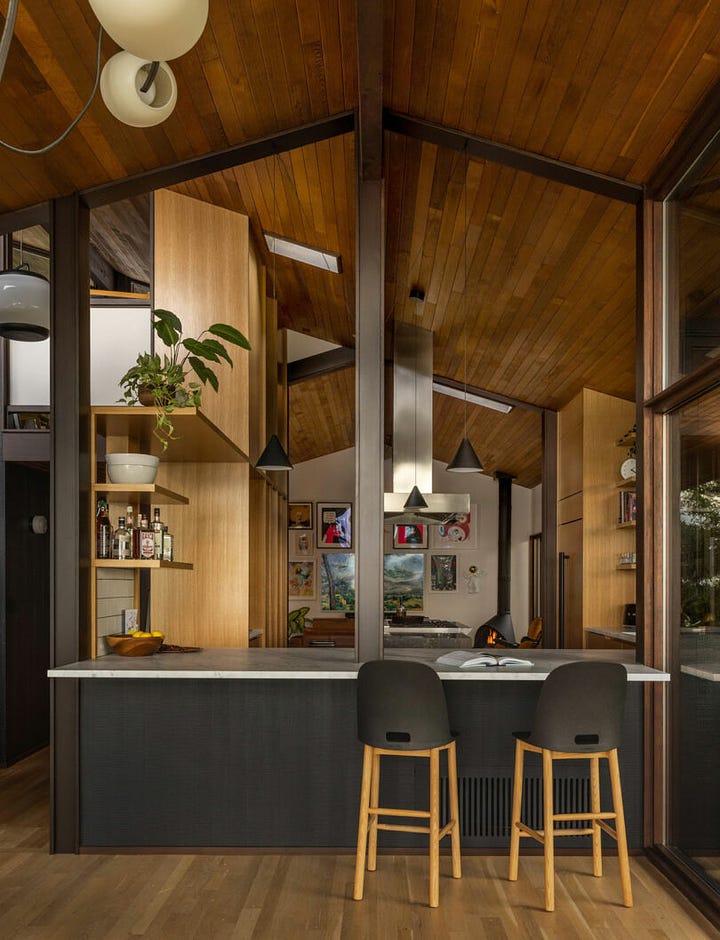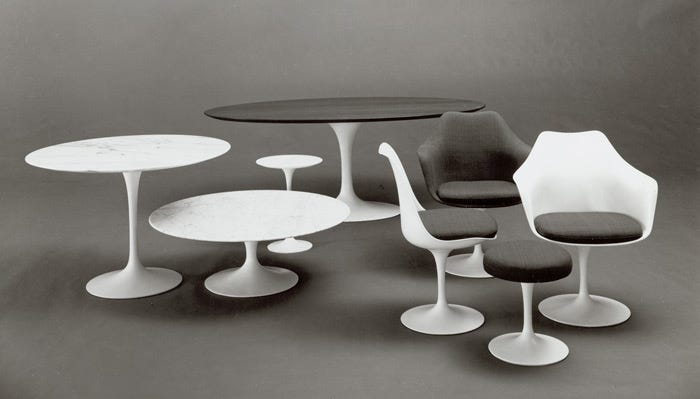As an Interior Designer, I often felt like I was making my own dreams come true through my clients' projects. Whether it was designing a blue kitchen, adding a Mole Armchair by Sergio Rodrigues, or creating a green-tiled pool, each project felt personal. The sense of accomplishment was so big, it almost felt like it was mine. But there's one dream I still have to fulfill for myself one day: living in a Mid-Century Modern house. This style has always been my favorite, and I’m still fascinated by it.
While that dream is on hold - and I know finding something like that in Portugal isn’t easy - I’ve been pouring that love into a new collection for Valsa Home, inspired by mid-century modern interiors. I’ve done a lot of research, and what’s coming next is a warm tribute to the beauty of this style.

The Essentials of Mid-Century Modern Design
Mid-century modern design took off between the 1930s and 1960s, covering everything from architecture to interiors, products, and even graphic arts. The style is known for its clean lines, simple forms, and a blend of form & function. It grew out of modernist ideas and was shaped by the big social, political, and technological changes of the time.
Wood was the star of the show: Used on walls, ceilings, floors, and also in built-in furniture like shelves and seating.
Organic and Geometric Shapes: A mix of smooth, flowing forms with sharp, angular ones - inspired by nature and modern industry.
Use of Glass: Maybe my favorite - big, floor-to-ceiling windows and sliding doors brought in tons of natural light and great views.
Innovative Materials: Designers loved experimenting with new materials like plastic, metal, and fiberglass, while still using natural ones like wood and leather.
Neutral Tones with Bold Accents: Soft colors like white, brown, and beige were balanced with bold pops of mustard, teal, or bright red.
Curated Collection of Mid-Century Modern Inspirations
Case Study House #22 by Pierre Koenig. The modern residence overlooks Los Angeles from the Hollywood Hills. It was completed in 1959 for Buck Stahl and his family.




The Eames House, Case Study House #8 located in the Pacific Palisades neighborhood of Los Angeles. It was designed and constructed in 1949 by husband-and-wife Charles and Ray Eames to serve as their home and studio. They lived in their home until their deaths: Charles in 1978 and Ray, ten years to the day, in 1988.




A house designed by architect Agatha Carolina in Jakarta, Indonesia:
The renovated Lark House in West Seattle, Washington.




The house of the stylist and creative director Gemma Keil in Sidney, Australia. Designed in the 1950s by architect and furniture designer Douglas Snelling:




- 1960s beautiful house:
The shift to the new era:
After World War II, a wave of optimism and economic growth swept through many Western countries, especially the United States. This era brought mass production, suburban expansion, and a strong desire for affordable, high-quality products that fit into everyday homes.
Thanks to advances in materials like plywood, fiberglass, and plastic, designers could explore new forms and production methods. These materials made it easier to craft lightweight, affordable furniture that could be produced on a larger scale for the growing middle class.
Starting with Modernism in the early 20th century, the aesthetic shifted away from the ornate styles of the 19th century - think Victorian and Art Deco - and embraced more functional and simple designs.
Around the world:
Mid-century modern really made its mark in Western Europe and the United States, but it also found its way to places like Brazil, Japan, and Scandinavia, each adding their own twist:
United States: California became the heart of the movement, thanks to its perfect weather for indoor-outdoor living. Iconic cities like Los Angeles and Palm Springs were buzzing with mid-century modern architecture, with famous architects like A. Quincy Jones, Mies van der Rohe, Frank Lloyd Wright, and Pierre Koenig creating stunning homes that captured the spirit of the time.
Scandinavia: In Denmark, the focus shifted to clean, functional designs that highlighted top-notch craftsmanship. Designers like Arne Jacobsen, Finn Juhl, and Hans Wegner turned furniture into pieces that people in Europe absolutely loved.
Brazil: Down in Brazil, designers like Oscar Niemeyer, Lina Bo Bardi, Jorge Zalszupin, and Sérgio Rodrigues took mid-century ideas and mixed them with tropical influences, showcasing natural woods and organic shapes that fit beautifully in their environment.
Japan: After the war, Japan embraced modernism in a way that blended mid-century style with traditional elements, especially using natural materials and creating minimalist spaces with a calm vibe.
Curious facts:
The Space Race Influence: The excitement of the space age in the 1950s and 60s really shaped mid-century modern design. You can see it in the futuristic shapes, innovative materials, and bold colors that reflect the era’s fascination with technology and exploring the great beyond.
The rise of fascism in Europe in the 1930s led to the migration of many European designers to the United States. Visionaries such as Ludwig Mies van der Rohe and Marcel Breuer brought with them the ideals of the Bauhaus and International Style, which had a huge impact on mid-century modern design, especially in architecture.
And, finally:
5 Iconic and beloved designs that are still in production today:
Akari Lamps by Isamu Noguchi (1951)
Eames Lounge Chair and Ottoman by Charles and Ray Eames (1956)
Arco floor lamp by Achille and Pier Giacomo Castiglioni (1962)
Whether you want to bring a bit of this aesthetic into your own home or just admire the beautiful designs, getting to know the history and principles of mid-century modern lets us appreciate the style in a whole new way.
I hope this post has sparked your curiosity and helped you fall in love with the elegance and simplicity that define this timeless style. For me, it was a very pleasant time putting all this together for you!
Wishing you all an inspired and beautiful weekend!
With love,













Great post Raquel! I love design but admittedly know very little about it, so it's so interesting to see all of the influences and nuances that go into a particular style. Keep up the great work :)